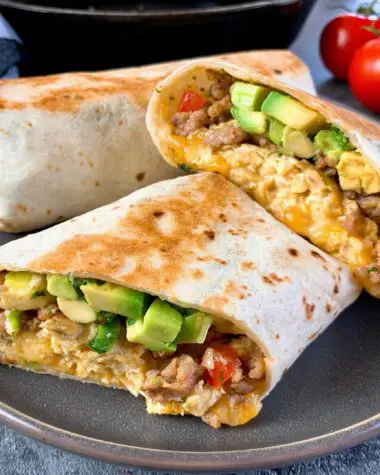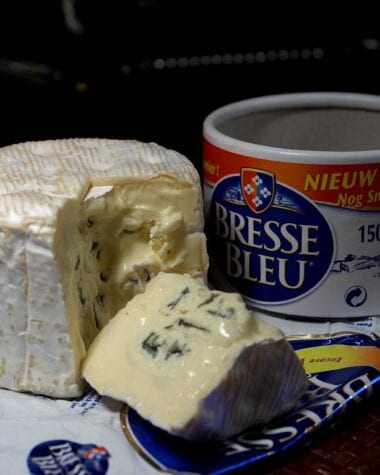As long as the method of freezing food exists, so too is the process of thawing. After all, it is just practically impossible for food handlers to use frozen foods to prepare dishes without thawing them first.
While freezing foods is an excellent method of extending their shelf life, it also makes them unmanageable, thus requiring thawing to make certain critical operations, including cooking, effective.
It is worth pointing out that freezing food only puts pathogens, such as disease-causing bacteria or other microorganisms, inactive – it does not kill them. So, as soon as the food becomes warmer, bacteria can begin to reawaken and multiply. That being said, keeping it out of the so-called danger zone of temperatures when thawing is imperative.
In this article, let us dive deeper into how thawing really works and the proper methods of thawing frozen foods.
What is Food Thawing?
Food thawing is defined as the process of melting the ice crystals formed on food due to freezing. This operation requires higher temperatures to reverse the effects of freezing food. To render frozen food manageable and ready to cook, one must thaw it first – skipping the process altogether can either lead to ineffective cooking or not being able to cook at all.
For instance, cooking without thawing can prevent the center of the food from reaching the internal target temperature, thus, resulting in the growth of bacteria within, harming anyone who unknowingly consumes them.
Melting the ice in foods is done by placing them at a higher temperature than the freezing point of water. However, because the rate of thawing ice is not equal throughout the food surface, some portions of the food may thaw first before its entirety. This allows foodborne bacteria to contaminate the large majority of the food itself, resulting in spoilage.
With that being said, thawing must be done in a way that is not just safe but also fast. This means that the method you see most commonly, leaving frozen food at the counter or food preparation sink to thaw for itself, isn’t advisable. In fact, it is downright unsafe.
Food handlers are always advised to thaw foods ahead of time inside their respective refrigerators. Spoiler alert! It is one of the proper methods of thawing frozen foods we will discuss below. We must stress this more, but rushing the whole process by cooking partially thawed food would only lead to uneven cooking. It serves no purpose other than increasing the risk of causing foodborne illness.
With that out of the way, let us look at the advisable methods of thawing frozen food.
Proper Methods of Thawing Frozen Foods
Food safety agencies recommend three proper methods for thawing frozen foods: using a microwave, inside the refrigerator, and in cold water. These methods all have a specific combination of temperature control and thawing time that you should always be mindful of to pull the method off properly. Their principal safety control is that neither of the three methods mentioned will allow the food to stay in the temperature danger zone for more than two hours.
Using a Microwave
The fastest thawing food method among the three. That being said, while thawing foods using the microwave’s defrost setting may yield the fastest result, it sometimes leads to uneven results, especially when the frozen food has an irregular shape.
Because the microwave cannot apply heat evenly to the surface of the food, some parts of it may thaw much faster than others. This can then lead to the thawed parts accidentally being cooked inside the microwave itself as you try to thaw the certain parts that are still ‘frozen.’
Foods that are thawed via the microwave are recommended to be immediately cooked. This is because some parts of the thawed food, especially those that received the brunt of the heat due to its irregular shape, will be exposed to the temperature danger zone and, thus, must be immediately eliminated through cooking.
This method of thawing is recommended in case you are in a rush. Just make sure that you are keeping an eye on the food being thawed from time to time.
Inside the Refrigerator
In case you are wondering which is the safest method of thawing frozen food, you have your answer here. Thawing inside the refrigerator is considered by most as the safest way to defrost frozen food. However, doing so requires a lot of time. You will need to plan ahead to ensure successful thawing inside the refrigerator.
As a food handler, you must anticipate how long it would take to thaw foods at refrigerated temperatures – that is harder than it sounds. Some foods, especially large cuts of meat or blocks of food, sometimes even require a whole day just to defrost inside the refrigerator.
While truly time-consuming, thawing food inside the refrigerator offers several advantages over the two other proper methods. For one, this process can retain the freshness of the food itself for more than a day, assuming it was not taken out after the whole thawing process began.
Furthermore, foods thawed inside the refrigerator can be refrozen without the risk of accidental spoilage or contamination by bacteria.
To pull this method off optimally, ensure that the constant temperature of your refrigerator is consistently maintained. This method is recommended for thawing perishable foods such as raw poultry and meat.
In Cold Water
If you need a much faster but safe defrosting method, you may want to consider thawing foods in cold water. Unlike the previous thawing method, submerging food in cold potable water allows for faster temperature change as the water coats the entire food.
That may be the case; thawing food in cold water requires much attention. Here are a few things to consider while doing so:
- As much as possible, the food must be contained in a leak-proof bag. This prevents the cold tap water from coming in direct contact with the food, lessening the risk of contamination.
- The water you should apply to the food must be cold and changed every 30 minutes. Once the tap water becomes at an equal temperature with the food, the process becomes much slower.
- Thawed foods in cold water must be immediately cooked to prevent unnecessary spoilage. While you can put them back in the freezer to freeze again for some reason, it isn’t advisable.
One disadvantage of thawing food in cold water is that it is not economically sound. To some, doing so is just way too wasteful, especially if you do so via running water. Moreover, the bag you put the food in is more prone to holes or openings if subjected to a continuous water flow.
Thawing food in cold water sits in the middle of the two proper thawing methods discussed above. It is slower than using the microwave but is much safer, and it is much faster than thawing inside the refrigerator but less safe.
The Improper Way of Thawing Foods
Say that you are in a hurry because you forgot to thaw the food you plan to cook for dinner; you may become very tempted to pull it out of the freezer and leave it on the kitchen counter surface to thaw much faster. While this method of thawing food is indeed more convenient and much faster than the proper methods of thawing we discussed above, it is not safe and is never advisable.
At room or ambient air temperature and as the food thaws, parts of the food that have already thawed are basically being exposed to the aforementioned danger zone temperature range. This enables any present foodborne illness-causing bacteria to multiply much faster, spoiling the food even before you can actually cook it.
Can you Refreeze Food After Thawing?
Whether refreezing food after thawing is safe or not depends on the method you use. For foods thawed in water or using the microwave, the foods must be cooked first before refreezing. This process is done to ensure that there are no surviving pathogens that will spoil the food between the time of placing it inside the freezer and freezing itself.
As for refreezing foods after thawing them inside the refrigerator, you can freely do so even without subjecting them to any cooking method. Directly refreezing the food thawed inside the refrigerator is safe as they were not exposed to the danger zone, so to speak.
As for the foods’ quality, refreezing them can definitely cause texture and nutritional changes. In fact, freezing can even damage the tissues of the food, especially vegetables and fruits, and can make them limp when thawed. So, as much as possible, cook the food you thaw.
Conclusion
There we have it! Those are the proper methods of thawing, and a few do’s and don’ts. While there are myriad ways to thaw frozen food, the three we mentioned above are the most effective and undeniably safest methods of thawing.
Make it a point to plan ahead what you will be cooking and apply the recommended thawing method relative to the time and equipment you have at your disposal. Moreover, note that while refreezing food after thawing can be safe at times, it is much more advisable to always cook what you thaw.
Curious about how long you can keep certain foods in your freezer? Perhaps our article about how long you can keep frozen food in the freezer might interest you.









